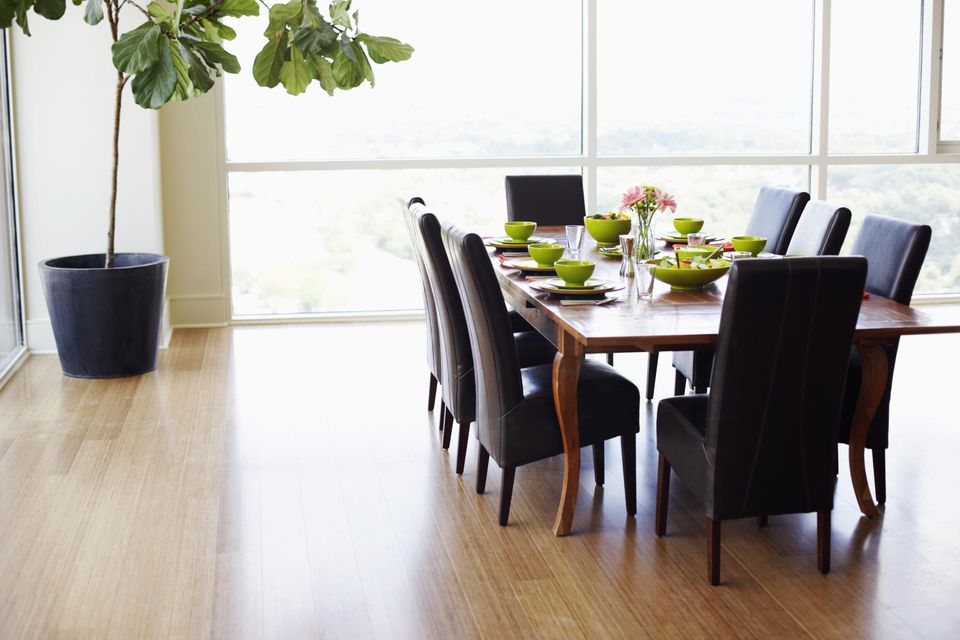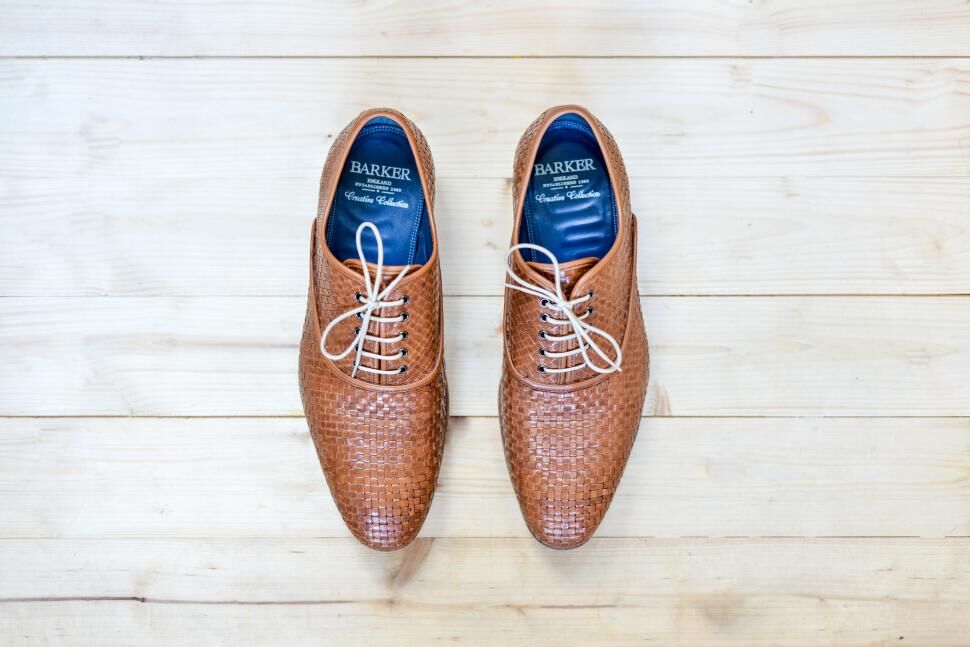Laminate flooring, due to its large quantity of wood content, is acceptable but not ideal for environments with high moisture, such as bathrooms or basements. Even “laminate-friendly” rooms such as kitchens can have sub-zones that are unfriendly to laminate flooring: in front and under the dishwasher, sink, and refrigerator.
A type of laminate flooring called waterproof laminate, made entirely of plastic, allows you to install this product in such places.
While this product truly is water-proof, it has significant limitations that may encourage you to seek other types of flooring.
Laminate’s Solution for Dealing With Water: Avoid It Altogether
One solution has been to ask homeowners not to install the product in moist places, such as basements or even children’s bathrooms.
Slightly more effective solutions have been to develop tighter seams between the boards and to introduce more melamine resins in the fiberboard mix.
But none of that matters when your dishwasher overflows. This is the reason behind the “topical spills” clause in most laminate flooring warranties.
A typical industry warranty (Armstrong) notes that its laminates are covered under warranty and “[w]ill resist topical water damage, meaning that planks or tiles will not swell, delaminate or peak at the seams due to topical spills, provided that the liquid is wiped up and the floor is allowed to dry.”
Topical spills means a dropped glass of water, not an overflowing clothes washer. Even though topical does not mean “top,” it could: all spills which remain on the plasticized wear layer, with perfectly seamed boards, and with 100% silicone caulk added in problem areas (around bathtubs), should remain free of damage.
What Happens to the Fiberboard Core?
The problem is not with the top layer, but with the core. Laminate flooring’s core is little more than a dense type of fiberboard. If you’ve ever seen a sheet of particle board get rained on, you’ll know how it bubbles up and crumbles like a wet soda cracker.
One little-known aspect of this moisture-and-laminate issue is that the moisture problem actually starts in the factory, not in the home. Flooring manufacturers have found that high moisture content in the fiberboard particles in the factory can result in poor adhesion of the top melamine wear layer.
Waterproof Laminate Brands
Today, Parcolys NV, a Belgian company that is the parent of Aqua-Step, is the main manufacturer of waterproof laminate flooring. With 23 woods and 3 stones, Aqua-Step does not have the wide range of styles homeowners might expect from the non-waterproof market.
But the good thing is that Aqua-Step is truly 100% waterproof–no need to lay down a moisture barrier. Planks join by way of a click-and-lock method. Conventional laminate needs expansion joints to allow for the product to expand and contract according to room humidity. Aqua-Step absorbs no water at all, so no need for expansion joints.
Dumaplast Dumafloor is another one, also from Belgium. Dumafloor has been in production since 2007.
Expansion Profiles Unnecessary
One unexpected benefit of installing waterproof laminate is that it does not require expansion profiles. These are intermittent gaps that are imposed on a large field of conventional laminate flooring to allow for natural expansion and contraction of the flooring. Waterproof laminate is 100% unaffected by moisture, thus it needs no expansion profiles.
Luxury Vinyl Flooring as an Alternative
Most of the waterproof laminate market has been siphoned off by an upstart called luxury vinyl flooring (LVF).
LVF is thicker than ordinary vinyl flooring; has better embossing (texture); and looks more like real stone or wood.
LVF manufacturers have been pumping out tons of exciting wood species and stones, such as teak, bamboo, travertine, and bamboo.
It is 100% waterproof, too. You can drop LVF in a tub of water for weeks and it will come out having absorbed no water.
One downside of LVF is that it is not as thick as waterproof laminate. Aqua-Step clocks in at 8 mm; for LVFs, 8 mm would be considered very thick and very expensive. Average thickness for LVF runs around 3-5 mm.
Is Mannington ICORE Indicative of the Waterproof Laminate Market?
In 2003, Mannington Mills patented a new type of waterproof laminate that bypassed many of those previous solutions. Their product, dubbed ICORE, had some of these features:
Thermoplastic Core, Not Fiberboard – The key aspect is that ICORE did away with the fiberboard and replaced it with a “plastic” core made of PVC. As you can imagine, PVC (which is also used for water pipes) is quite waterproof.
Print Layer and Overlay – This is just like conventional laminate flooring. Separate layers are required for better print adhesion, rather than printing straight onto the thermoplastic core.
Honeycombed “Cells” Inside – “Foot feel” is important with laminate flooring, because it is so thin. Walking on laminate flooring can be difficult because it has little “give.” With waterproof laminate such as ICORE, interior channels or cells made for a springier feel.
Then, Mannington pulled the plug on iCORE, no reason given but presumably due to poor sales.
Original Source By Lee Wallender






